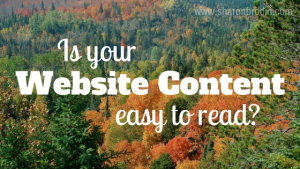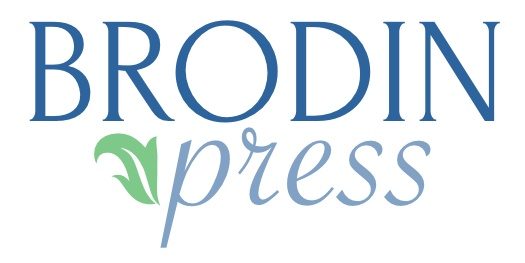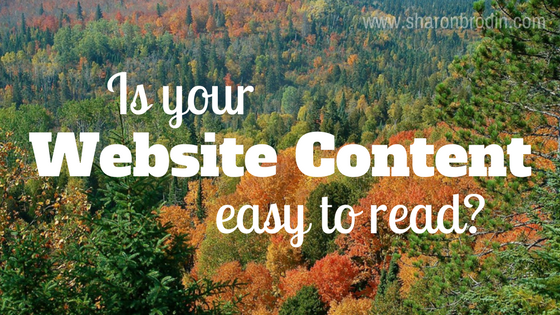
There are loads of ways you can ensure your website’s content is easy for your visitors to read. Why is this important? So they’ll read it!
You want them to see clearly, quickly and easily that you can solve their problem or help them gain what they want.
We’ll cover just 5 of these in this issue of Bite-Size Marketing Digest. They’re truly bite-size and actionable.
The first two tips are structural. Get these right and you’ll encourage your visitors to “come in”—even if they’re not sure why.
1. Use a large font size
Reading on-screen is harder on our eyes than reading in print. So when the font size is large, our eyes can read more without straining. 16-point is a good rule of thumb.
Forcing your visitor to enlarge the screen themselves, or “play trombone” when reading (I’ll always think of Bing Crosby in White Christmas when seeing small print!)is forcing them to work harder.
If it’s large already, there’s no work involved. It’s easy to read. We want easy!
2. Keep your paragraphs short
Short paragraphs with a full space between them also make for very inviting reading. Why? It doesn’t look intimidating. It looks easy. 3-4 lines tops is a good guideline.
Long paragraphs (especially in small print!) just look like too much work to get through. Most of your visitors won’t bother to try.
The next 3 tips have more to do with the content itself. They’ll help keep your visitor reading.
3. Vary the sentence length
Much to the chagrin of all English teachers everywhere, sentence fragments are perfectly acceptable in copywriting.
(In fact, many of the rules we learned in our high school English classes are tossed out for business writing that works.)
Short sentences keep things understandable, especially if your topic is technical at all. And varying the lengths of your sentences tends to keep things active—such as inserting a fragment between two longer sentences.
4. Be concise
My son just asked me to read over his first paper for this semester’s college composition class. When I pointed out few of his sentences were quite wordy, he said, “But Mom, I’ve got to use up 3 pages!”
Thankfully our sites don’t require a page count. We’re after the opposite, in fact. We want to get our message across with as many words as we need, and no more.
5. Be conversational
Stuffy business-y talk isn’t easy—or enjoyable—to read. Academic talk isn’t either (back to our high school English teachers).
The best style for your visitors to easily move through your content and want more? It’s how you talk when sitting across the table from them at the local coffee shop.
A friendly, conversational tone puts your visitors at ease, and makes it easy for them to understand what you’re offering.
So remember, if you want your visitors staying and reading once they land on your website, make things easy for them. Make them feel truly welcome by making your content easy to read.

